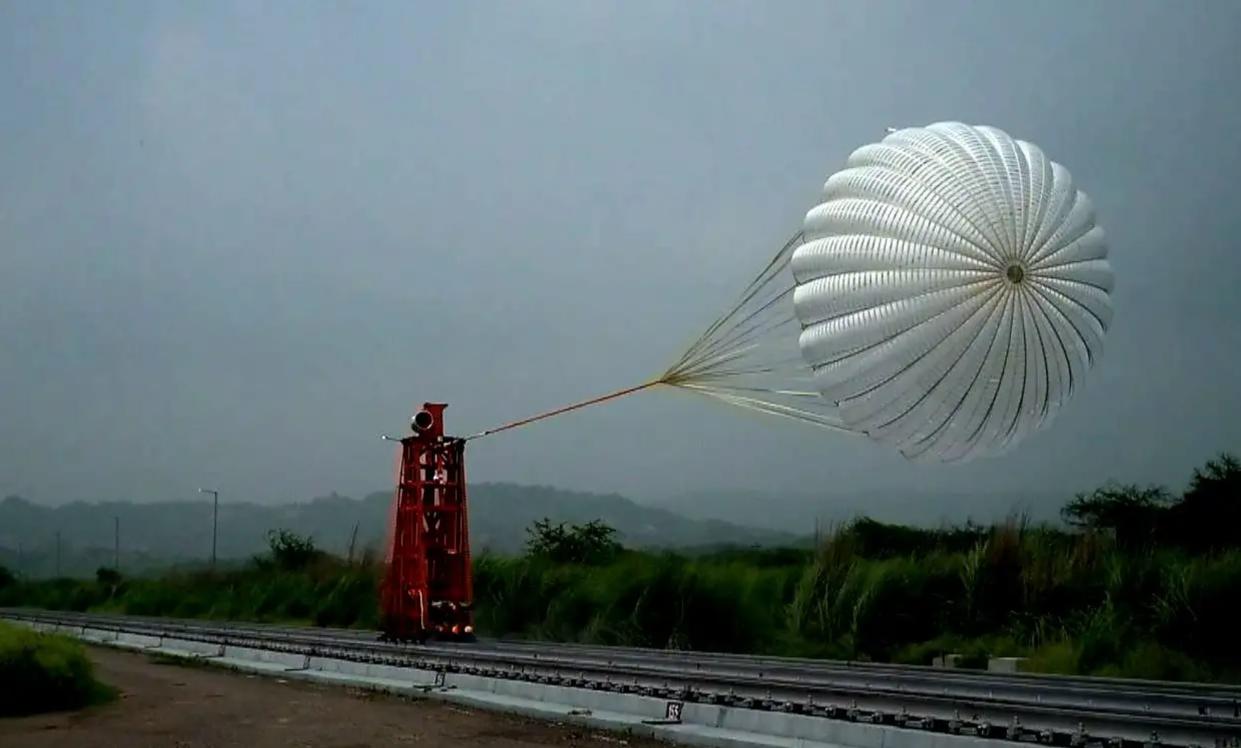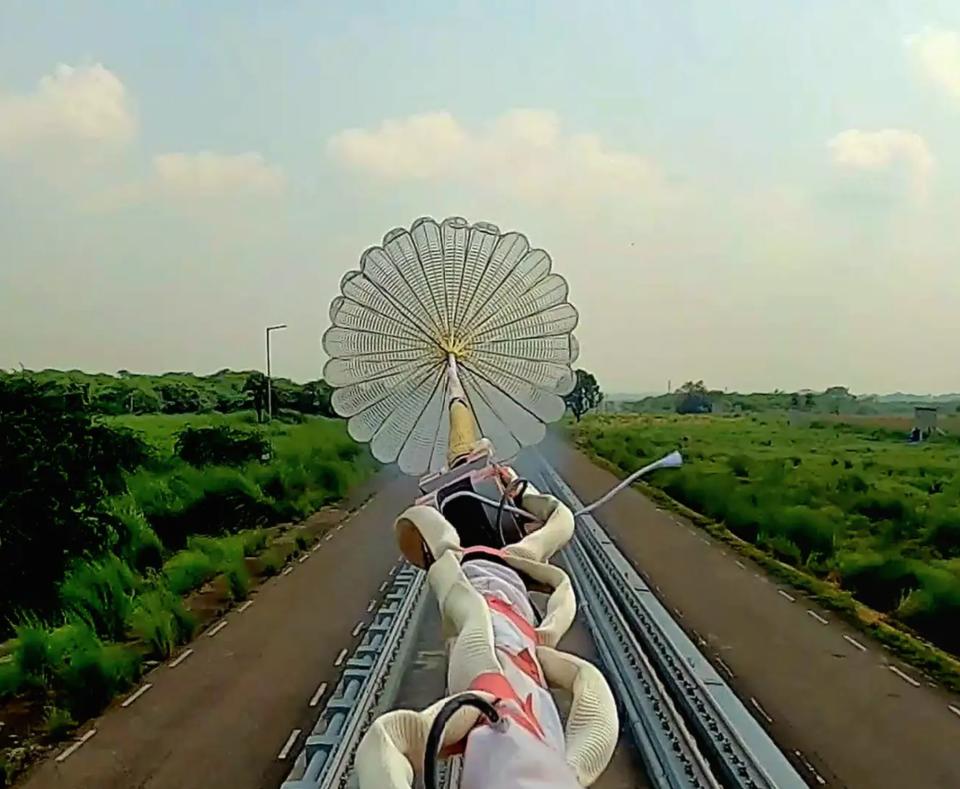India tests parachutes for Gaganyaan crew capsule using a rocket sled (video)

India is making strides toward independently launching astronauts to space.
While the attention is currently on India’s Chandrayaan-3 Vikram lander and Pragyan rover on the moon, the Indian Space Research Organization (ISRO) is also making progress toward other lofty goals.
India’s Gaganyaan mission envisions sending three astronauts to low Earth orbit, requiring the development of a spacecraft that can get crew into space and safely back to the ground.
Related: India tests recovery of spacecraft for Gaganyaan astronaut mission (photos)

As a crucial step toward this goal, the Vikram Sarabhai Space Centre (VSSC) conducted drogue parachute deployment tests at the Rail Track Rocket Sled (RTRS) facility, at the Terminal Ballistics Research Laboratory in the city of Chandigarh between Aug. 8 and Aug. 10, according to ISRO.
The drogue parachutes are mortar-deployed conical ribbon-type parachutes with a diameter of 19 feet (5.8 meters). These are a crucial part of getting the Gaganyaan crew module safely back to the ground, serving to stabilize the spacecraft and reduce its velocity during reentry to Earth's atmosphere.
Video released by ISRO shortly after the trials shows the successful deployment of a drogue chute while traveling at high velocity on a rocket-powered rail track sled.
The drogue chutes will next be tested during a high-altitude abort test on Test Vehicle Demonstration 1 (TV-D1) in late September or early October, if all goes according to plan.
The Gaganyaan crew module will be decelerated by a complex system of 10 parachutes, according to ISRO. These are two apex cover separation parachutes, followed by a pair of drogue parachutes to stabilize the module. Three pilot chutes will then each extract three main parachutes to ready the module for a safe landing.
ISRO earlier this year conducted recovery tests, collaborating with the Indian navy to recover a mock crew module from a closed pool.

RELATED STORIES:
— New head of Indian space agency's 'biggest challenge' will be human spaceflight
— India's human spaceflight plans coming together despite delays
— India's Chandrayaan-3 moon rover Pragyan snaps 1st photo of its lander near the lunar south pole
Further major steps will see ISRO conduct a pair of uncrewed flights to test and validate Gaganyaan’s technology in low Earth orbit and ensure the modified Launch Vehicle Mark-3 rocket can safely carry humans to orbit. These are scheduled to occur in late 2023 and the first half of 2024.
The first crewed Gaganyaan flight could launch as soon as late 2024. It will carry three Indian astronauts on a short orbital test flight. At present, only the United States, Russia and China have the ability to launch people to space.

